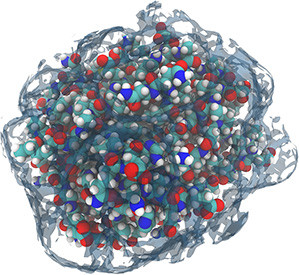Depending on the field (low-carbon energies, nanoscience for information and health technologies (fundamental research for IT and HIT), radiation-matter interaction), several IRAMIS teams are involved in this topic.
In nanosciences, the interfaces are places where the molecular or nanoparticle self-assembly is particularly original, as at the air-water interface (Langmuir films of peptides, specific ionic adsorption) or at the oil-water interface (emulsions stabilized by mineral nanoparticles or copolymers). Self-assembly results from an energy balance between volume terms and interfacial energies.
The teams (NIMBE/LIONS notably) also study the transfers through these interfaces (transfer kinetics of water-oil relevant for the treatment of waste) or kinetically formed structures by interfaces assemblies (phase separations of block copolymers or concentrated solutions of polymers).
The new sources of energy transformation (thermoelectricity, photovoltaic) require also the best control of the transfer of (often charged) species to the interfaces.
Finally the mastery of processes for the development and assembly of microfluidic components, will find many applications, like drugs production, thermoelectricity, heat recovery, …





